
As a website owner it is important for you to understand how Google algorithms (robots) go about cataloging and ranking all the websites on the internet. It is important that you have some exposure to SEO methodology, because this article will be diving a bit deeper into the topic.
What is SEO?
SEO stands for Search Engine Optimization. It is the practice of optimizing your website so that search engines like Google are more likely to feature your web page above your competitor’s web page. People all around the world are searching for goods and services, and they use search engines as a vehicle to find the stuff that they want.
Google has a job of cataloging every webpage in the world. They try to guess what the searcher is looking for, based mainly on what the searcher types into the Google search box. The majority of people only click on one of the top 3 search results they see. Therefore, you want your webpage to be as high as possible in Google’s search engine results page, also called the SERP.
Why do we want to learn SEO?
It is important to learn SEO because the higher your website ranks on Google, the more traffic you get to your website. The more traffic you get to your website, the more money you make. .Simple hire us to take care this for you
How do we do SEO?
SEO has become a pivotal component of the marketing strategy of millions of businesses. Back in the day, SEO was often synonymous to link building. Link building is the process of creating (or otherwise attaining) links on other people’s websites- that point to your website (also called Backlink building).
Backlinks are important because there are actually two types of users on the internet; humans and robots.
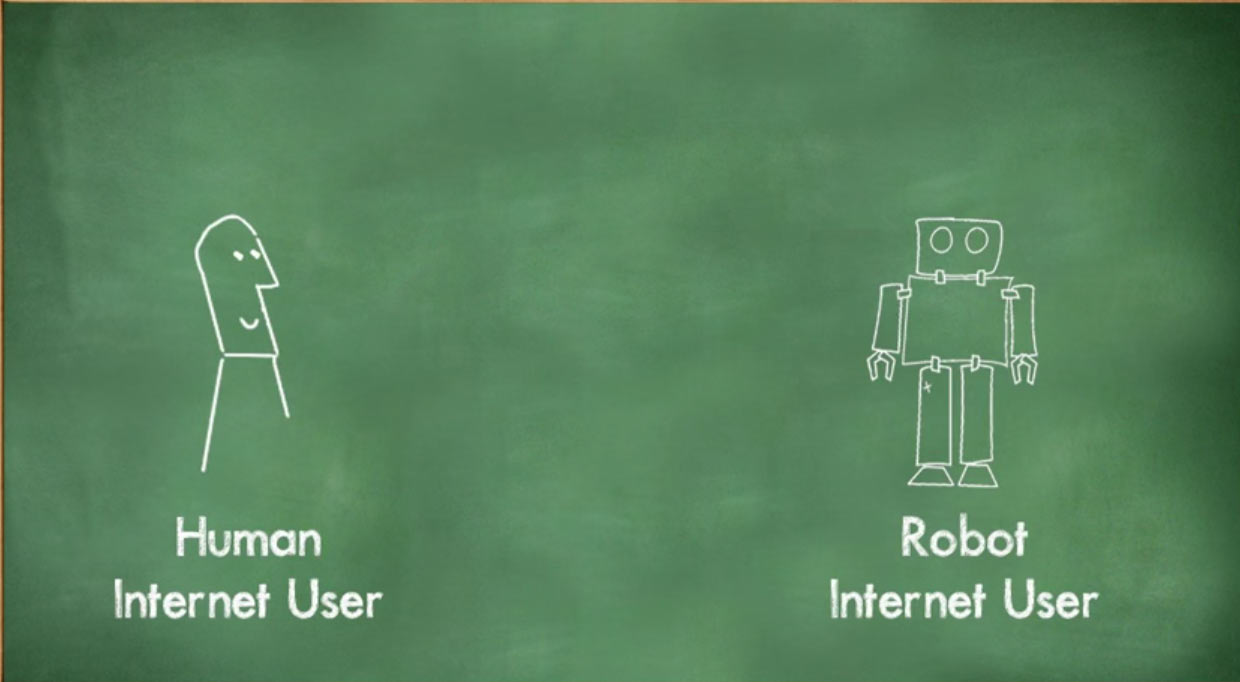 Google’s job is to catalog websites, and they do this by deploying thousands of robots (thousands of programs that search the internet and follow links all day and night). These robots have many names they are often referred to as; bots, spiders or crawlers.
Google’s job is to catalog websites, and they do this by deploying thousands of robots (thousands of programs that search the internet and follow links all day and night). These robots have many names they are often referred to as; bots, spiders or crawlers.
Google’s program is often referred to as Googlebot. These programs ‘crawl’ the web, download websites and store the content at a Google data center. Eventually all this data is run through a complex algorithm that assigns various rankings and cataloging metrics to every URL on the internet.

How does Google assign a rank value to your website?
Traditionally, the website with the most links won. Every incoming link to a website is in Google’s ‘eyes’ seen as a vote for that website. The more a website accumulated more links the more it was able to rank higher and higher. Hence, the website would get more clicks and traffic, therefore making more money.
Google’s success was in part based on the observation that; the more links people made to a webpage, the more useful or trustworthy that webpage probably was. The math behind page rank is very complex. If you can get a lot of websites to link to your website, Google uses this metric as a hint that your website probably has a lot of value. This concept is described in the images below.
- If your webpage does not have other web-pages linking into it, then that is bad.

2. If your webpage has lots of webpages linking to it, then that is good.
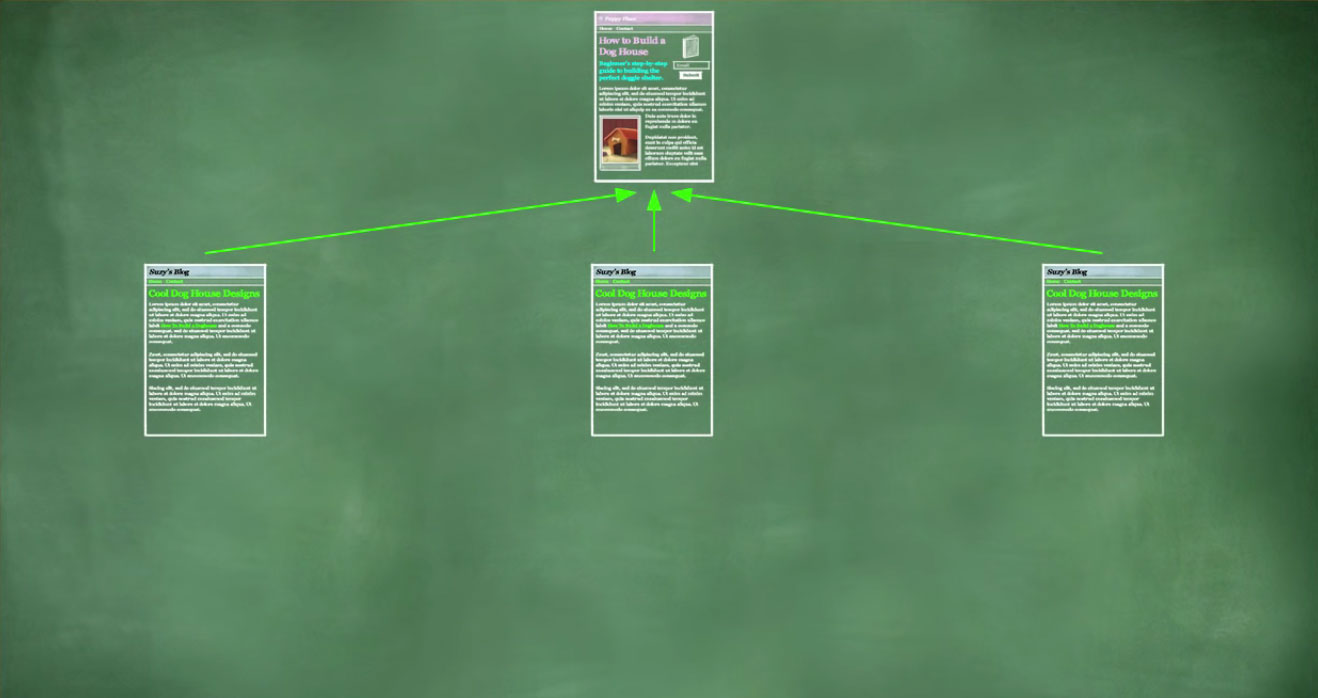
- If the webpages linking to your webpage also has lots of webpages linking to it, then that is VERY good.
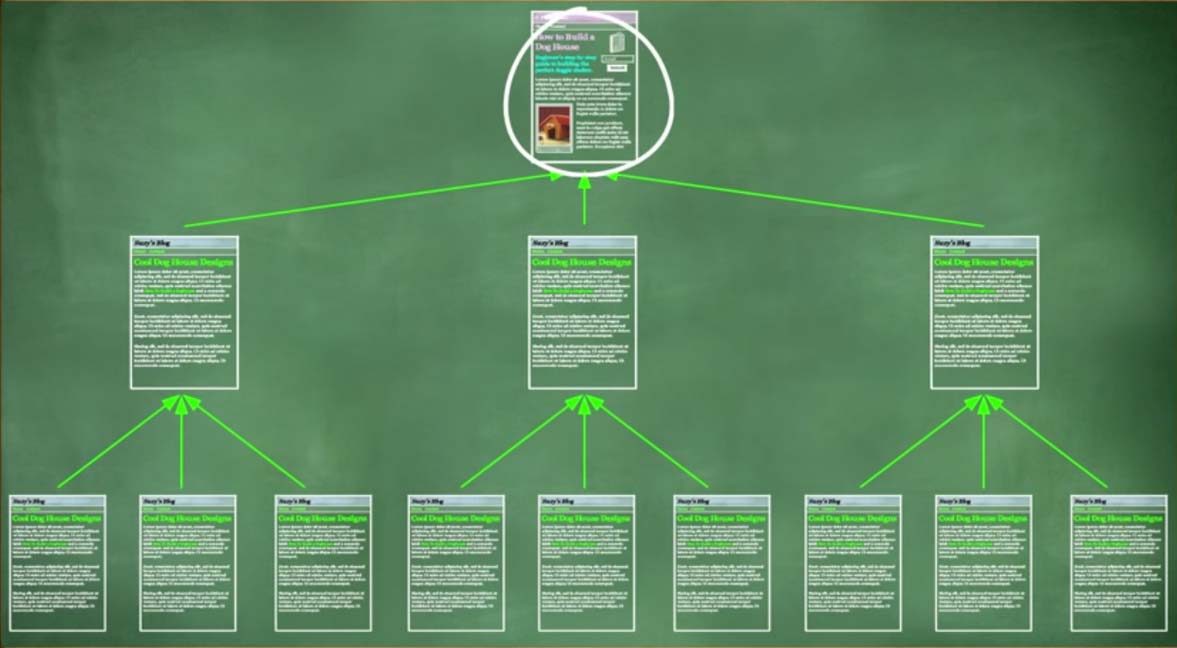
The top webpage is considered to be more important than all the other web pages that are below it.
It is therefore fairy easy to write a program (robot) to simply ‘crawl’ the internet and count the number of links pointing to each webpage. From here, an assumption that the webpage with the most accumulated links is probably better and should generally rank above websites that do not have many links is made. That was the original Google algorithm, the webpage with the most and strongest links wins.
However, there was a flaw to this algorithm. It could be and still can be ‘gamed’ by anyone willing to devote themselves to the monotonous chore of back-linking and creating thousands of links all pointing to the website they are trying to rank as illustrated in the image below.

It was this observation that inspired the birth of the billion dollar SEO industry, and a new generation of grey hat marketers who published an entire universe of hastily produced articles on the web that all contained links pointing back to their primary website. Many of these links contained cheaply written article content or were just pure spam links.
When Google realized this, they formed the web spam team, led by Matt Cutts, which started the indexing or otherwise punishing websites that were engaging in what Google termed as an artificial inflation of their Google’s search engine rankings.
Doing SEO used to entail a lot of backlinking, a lot of people claim that this is still what SEO entails. To some extent, this is true because the operation of Google’s algorithm still operates, on a large part, based on a webpage’s backlink value. Building this value is still a goal of off page SEO.
It is very hard these days to rank a webpage based purely on backlink construction. Google does have other factors that it uses to rank websites.
Three Factors (Other Than Backlinking) That May Affect Your Google Rankings
- Navigational Searches
These are people who use Google to find a particular website domain or brand. A big part of Google’s job is to return navigational search results. Often the world’s biggest search engine is not really a search engine at all, it is just a tool for looking up domain names.
In the early days if you didn’t type in the domain name of what you were looking for correctly, you could not get what you were looking for. An error message would usually appear as the one illustrated in the image below. You would usually have to start typing all over again.

These days people type in the brand name directly into the search box, the need to type in the full domain name is no longer necessary as in the figure below.
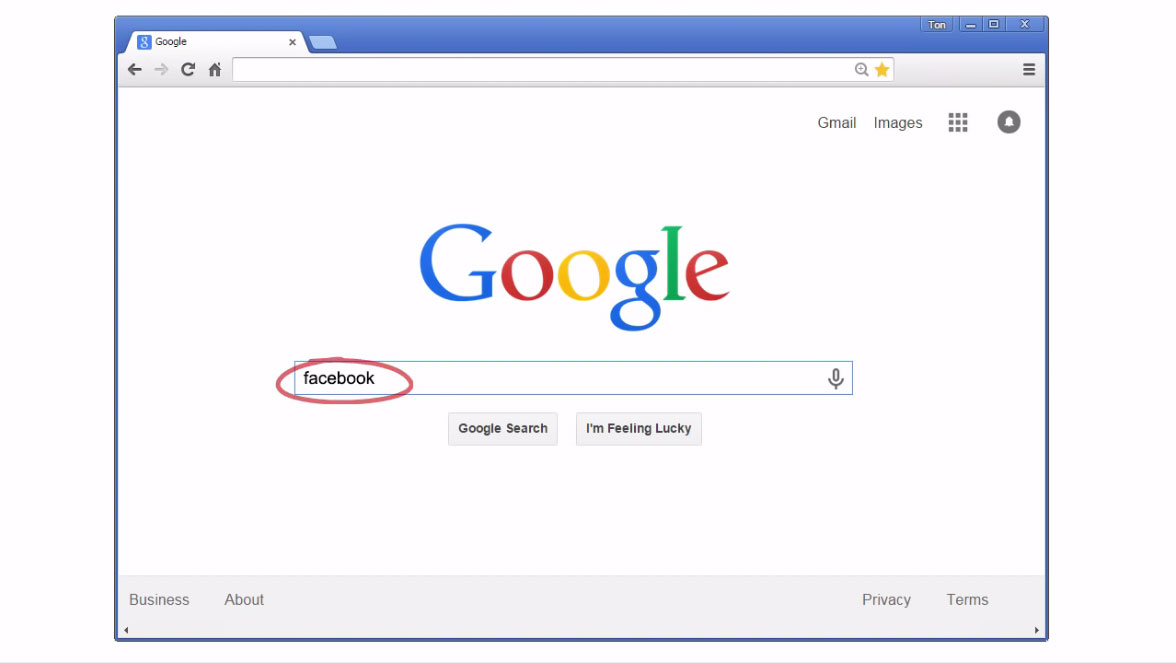
Modern search browsers interpret what a user types into the search box not as a domain but as a search query. The browser then sends this query to its default search engine, usually Google. Google receives this query and renders a search engine results page that usually does a good job of guessing which web destination you actually want to go to. The question to ask ourselves is how Google interprets queries from web browsers? Google places a lot of trust on the brand names that receive a lot of searches than those that receive very few searches.
In the example in the image below, the webpage, puppyplace.com, would receive a higher ranking than the webpage, doggyebooks.com, because Google views puppyplace.com as having better information since a lot of people interact with it.
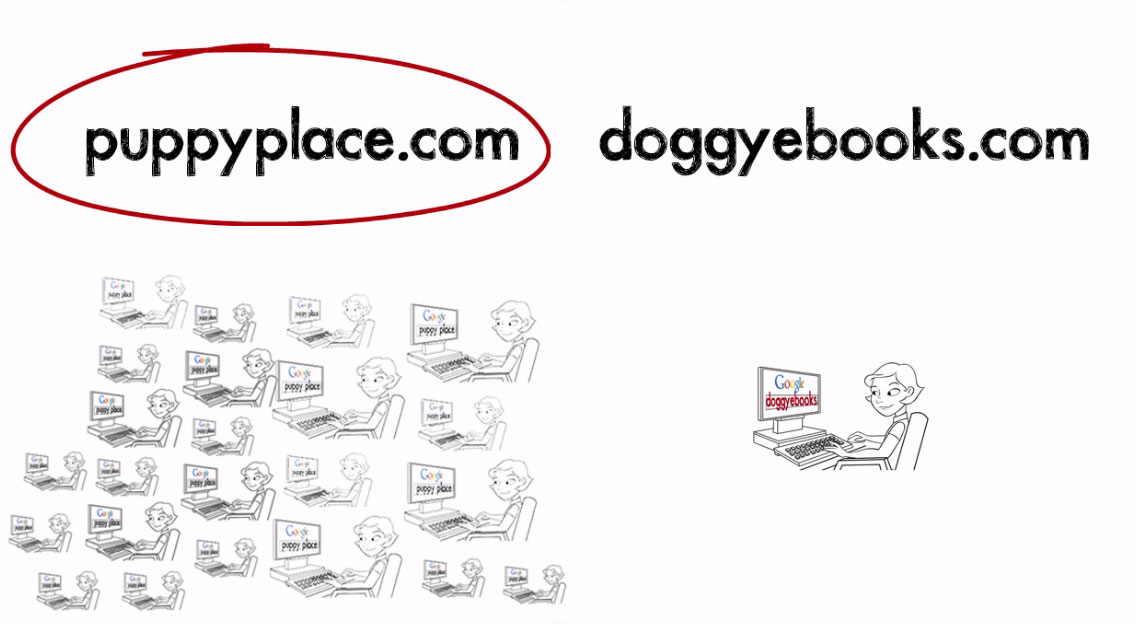
This sort of data is very obvious and an easy to harvest trust metric for Google to utilize. It makes sense for Google to presume that puppyplace.com should rank above doggyebooks.com.
- Return Visitors
Google has access to the I.P addresses of unique users as they instigate navigational searches. This means that they can also log the I.P addresses of these unique visitors. Hence, Google knows which webpages have return visitors.
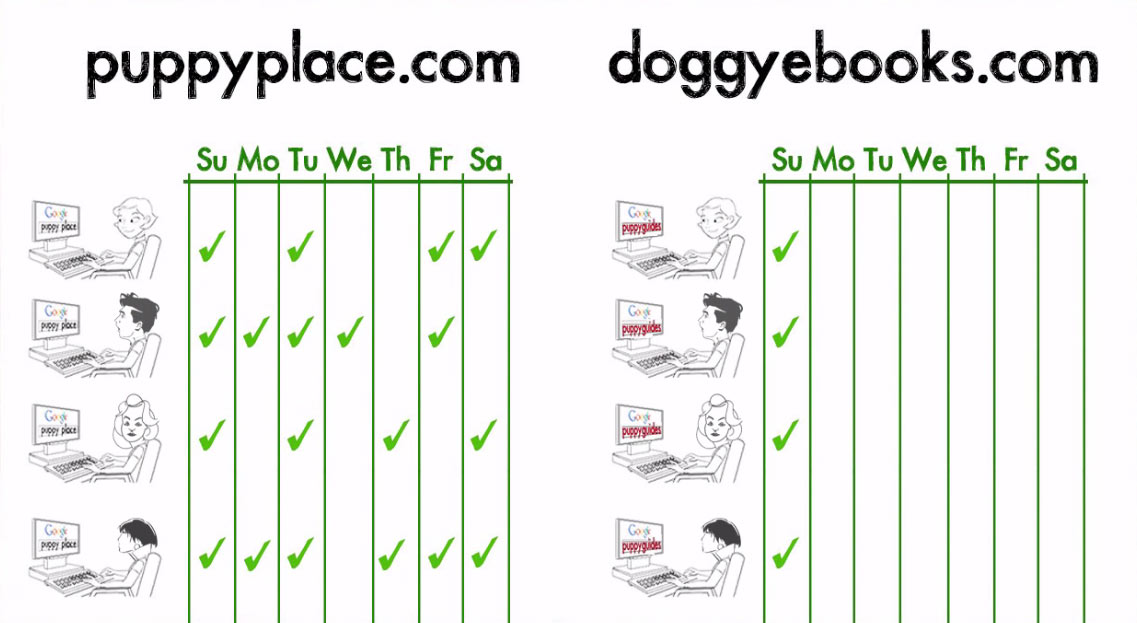
The picture above shows a highly simplified log file of four different users accessing a webpage via Google over a period of one week. We can see that the users visiting puppyplace.com returned to the website again and again, multiple times throughout the week. However, those users visiting doggyebooks.com visited the website only once but never returned.
From these findings we can conclude that the website puppyplace.com has better and useful information to users, meaning it is more trustworthy. Hence, Google is most likely to rank a website that receives more return visitors higher than its competitors. Return visitors is another metric that proves useful to Google when it comes to ranking websites.
- Pogo-Sticking
If a user clicks on a link of a webpage from the Google search results page, visits the webpage and does not like what he/she finds on that webpage, then returns to the Google search results page and clicks on another webpage link; this is referred to pogo-sticking.
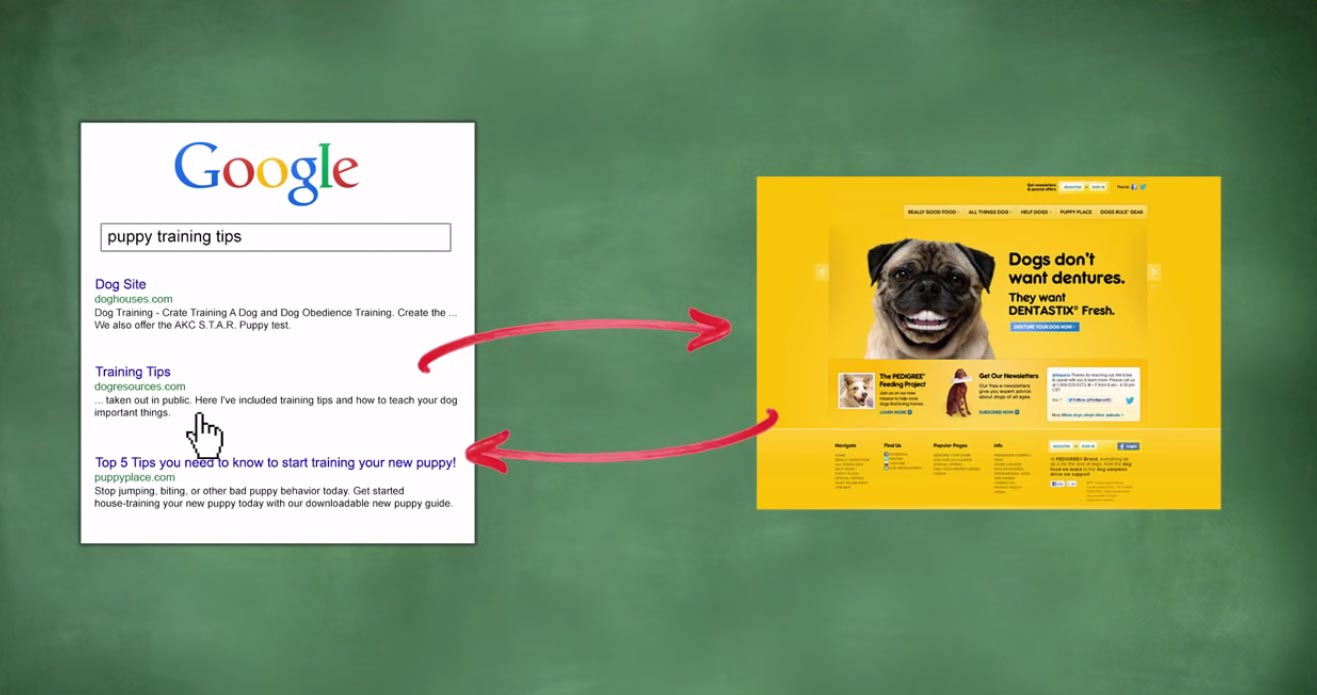
Pogo-sticking is bad. Users clicking on a webpage link from Google’s search results then seconds later coming back to Google concludes that the users hate the website as it has no valuable information. For Google, this means this link should be moved down and the useful links should therefore be moved up.
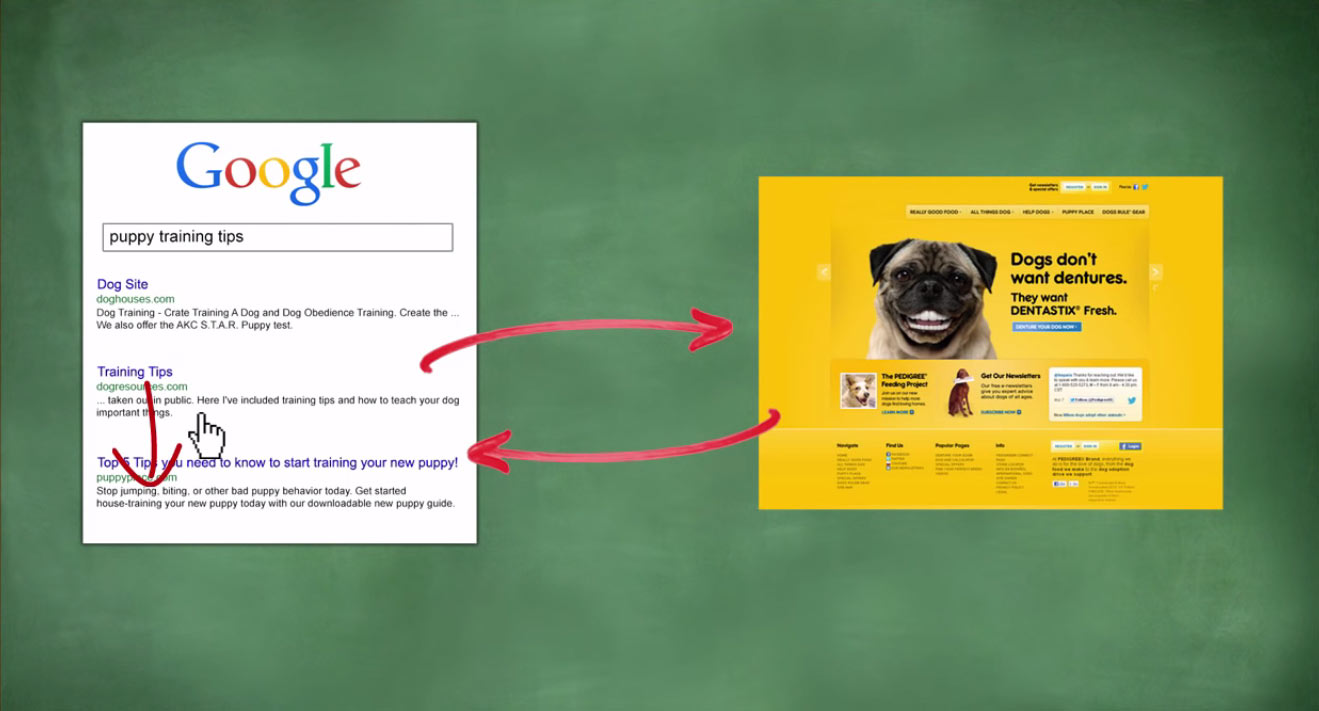
Websites that satisfy the query of a Google user are ranked higher than the websites that don’t satisfy the query of Google users.
SEO
There are two distinctive pillars when it comes to SEO:
- Off-page SEO
- On-page SEO
This distinction needs to be stressed because the skills-sets employed to these two pillars are quite disjunctive. Backlink building, which is the practice of obtaining links from other peoples’ websites falls under the off-page SEO category. On-page SEO is different, it refers to the SEO work that you do “on-page” on your own website. On page SEO encompasses a few tasks that primarily include:
- Getting the Keywords on your webpage: your article content should contain keyword phrases that people actually type into Google when they are looking for your product or service.
- Create an easily navigable web architecture: Your content should be arranged in such a way that it is easily discoverable by a search engine such as Google.
- Plan a content strategy: apply a reliable editorial strategy to be employed when choosing which topics to write about on your website.
Essence of On-page SEO
The essence of On-page SEO is to strive to refer to your “product or service” using the same words that your customers use when they search for your “product or service”. For example if your customers are referring to a San Francisco florist, and the words ‘San Francisco’ and ‘florist’ do not appear on your webpage, then it is asking a lot for a Google algorithm, to know how to categorize and rank the website.

We, as humans, can see the picture of the golden gate bridge. We can also see a bunch of flowers for sale, so it is easy for us to infer that this is probably the website of a florist near San Francisco. However, in a machine’s ‘eyes’ this just looks like a page of colorful pictures and some text about flowers.
That is why we use Keyword tools to dig up lots of keywords that reveal what our potential customers, the human searchers on Google, are actually typing into Google. The method by which you insert these Keywords into Google is what comprises the art and science of on-page SEO.
On-page SEO is more preferable than Off-page SEO for several reasons:
- Change resistant: While Off-page SEO is a practice that is constantly in flux, on-page SEO is change resistant. Any changes made to the Google algorithms, such as the previous Panda and Penguin updates in most cases affect off-page SEO. However, such updates or changes do not affect on-page SEO.
- Control of Content: In on-page SEO you have full control of the contents of your website unlike for off-page SEO where all the content of the webpage is controlled by the owner of the website. Once you have published your backlink content on someone else’s server, you don’t retain any control of it. You are forever subject to the whims of the guy who owns the website.
- It is something you have to do anyway: whether you know SEO or not your website has to have some content on it. You have to put words on your website. Once you learn on-page SEO, the amount of time it takes to create an SEO optimized webpage is not really much more than the amount of time it takes to build a webpage that does not have any SEO optimization at all. Hence, if you have to build a webpage, it is good to have it built based on foundational SEO principles.
So, if you’ve got to build the site anyway, you might as well build it utilizing foundational SEO principles. These are the principles we discuss on this blog.. (if you keep learn it will become second-nature to you )
i . 
ii. 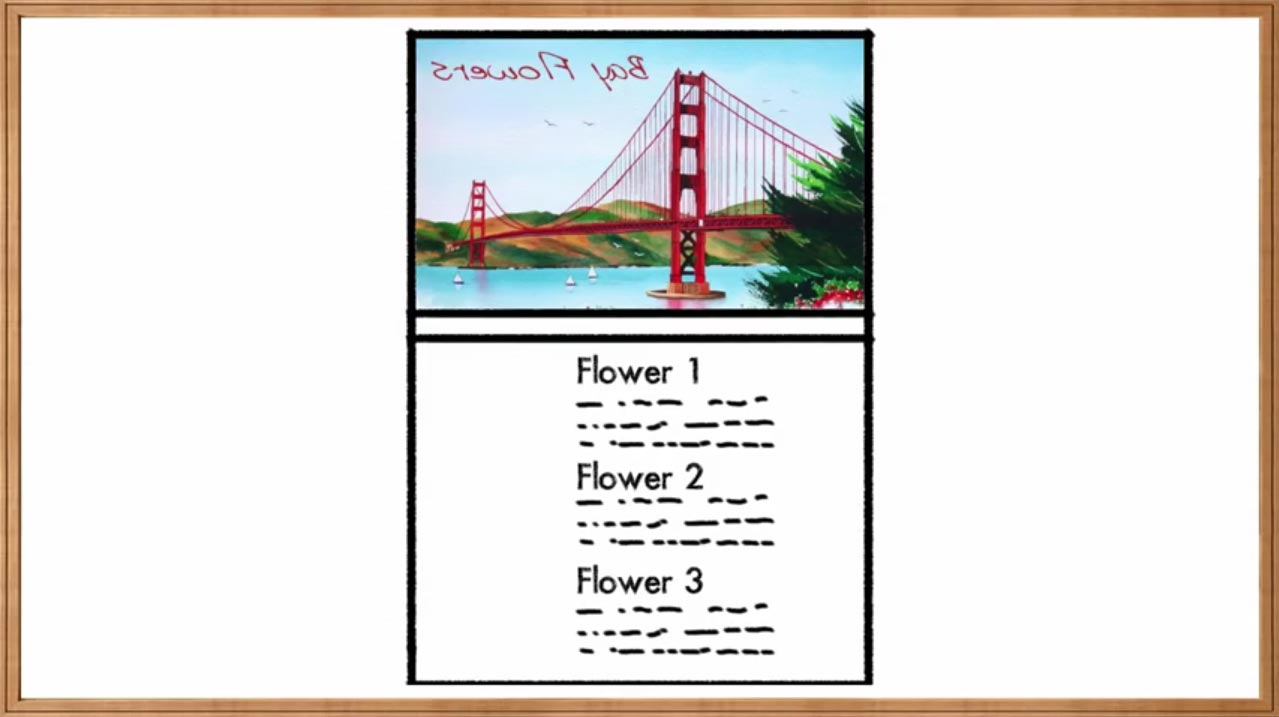
iii.
iv . Or Simple hire us to do this task




Cool never knew this was on the internet, this was really helpful and it was nice reading it. I will be glad to share it with others.